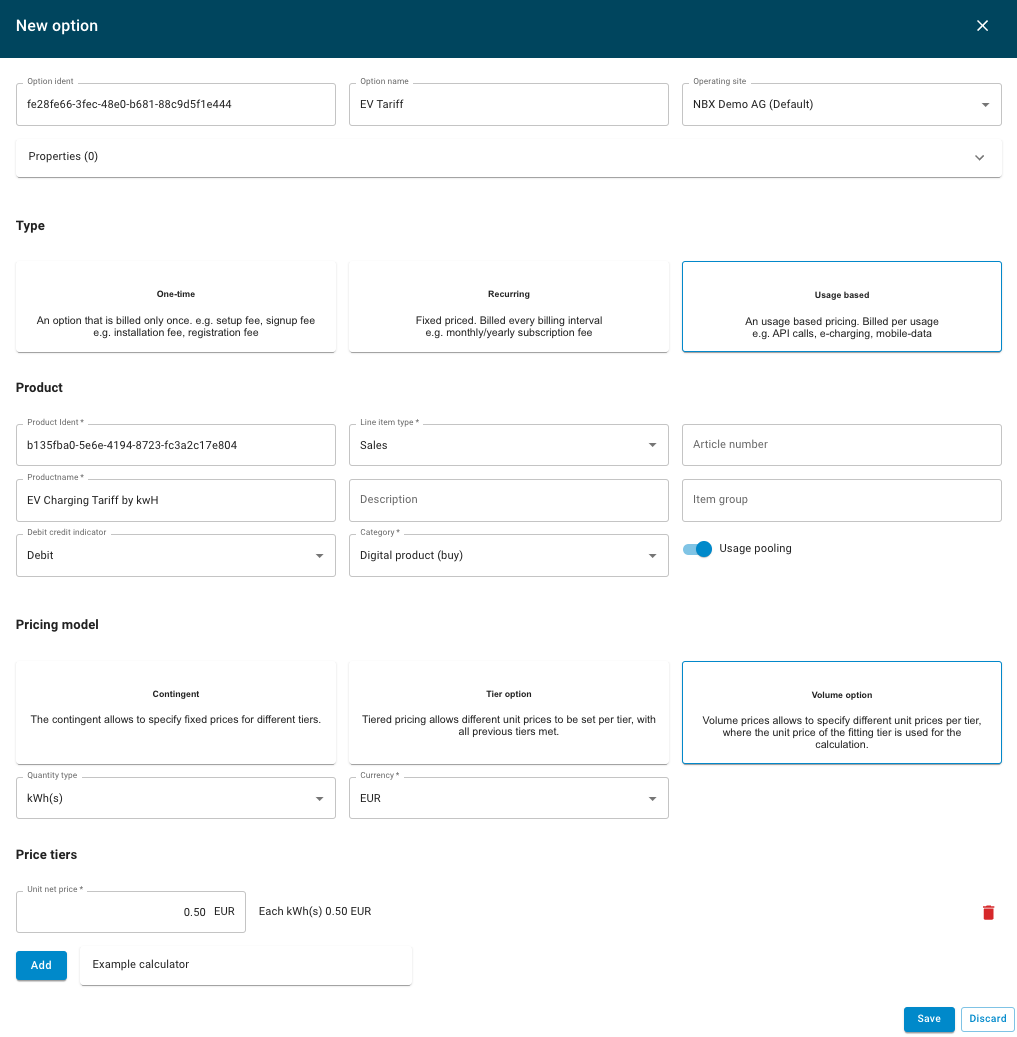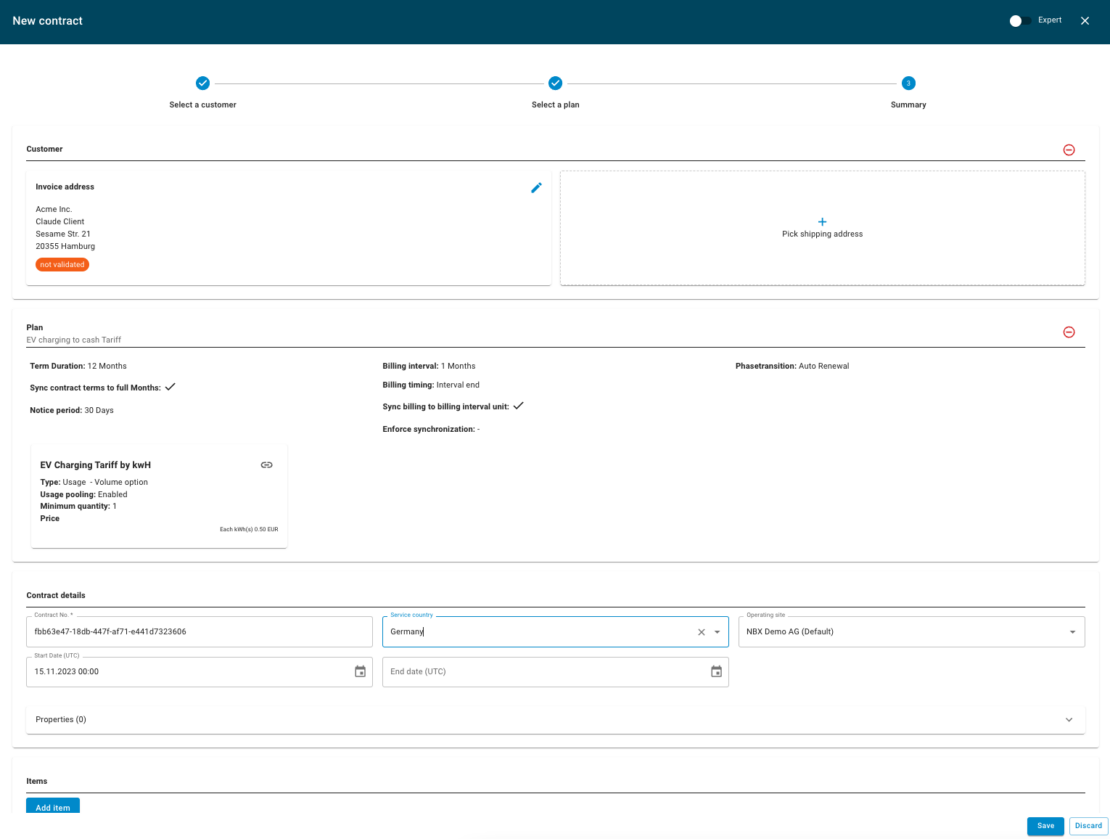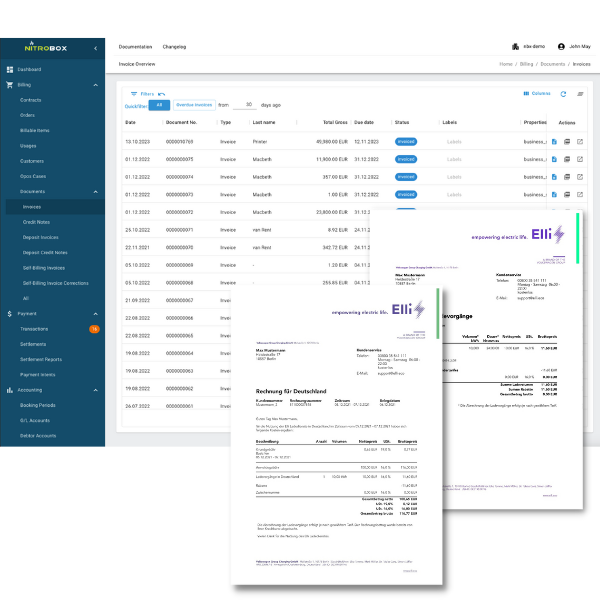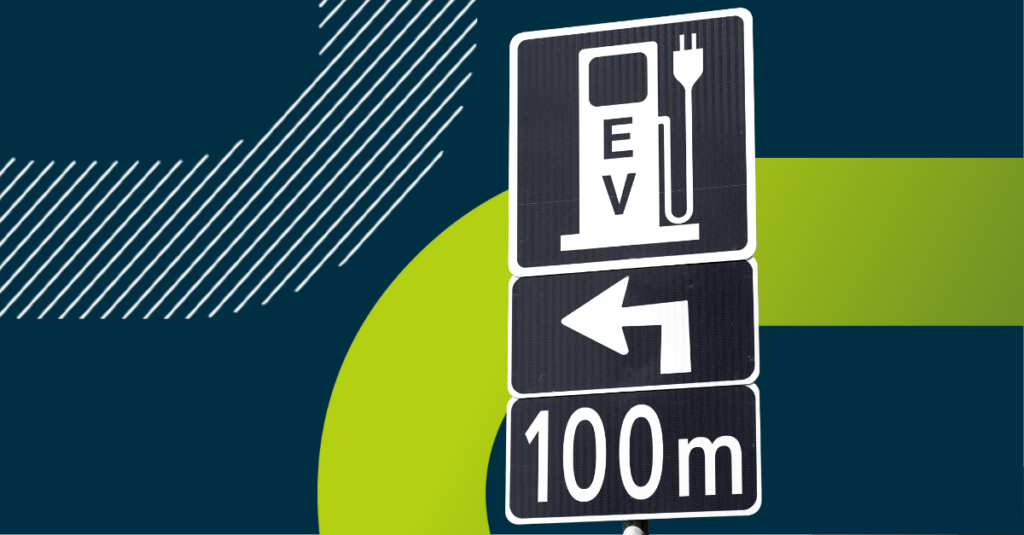In part one of our series, our partner doubleSlash outlined the multi-layered aspects that need to be considered when evaluating and billing a charging process – from the charge detail record (CDR) to invoice, which we have dubbed “EV Charging-to-Cash.”
Due to the complexity of the EV Charging-to-Cash process, the technology required to build a scalable EV Charging business as an EMSP must be able to automatically take customer charging data from the CPO, translate it into billable information, determine pricing, accept payment, generate an invoice, map the payment, and recognize the revenue in a timely fashion.
To accomplish this, the joint solution from doubleSlash and Nitrobox combines a customized mediation system with a smart monetization and billing platform. In the doubleSlash mediation system, the data is validated, mapped in a standard format, and connected to the appropriate customer contract. From there, it moves into the Nitrobox monetization and billing system where it is rated, billed, invoiced, and booked.
In the second part of our series, we would like to take a closer look at the monetization and billing aspect of this joint solution and how Nitrobox can help you to monetize and bill a comprehensive and scalable e-charging business.
Table of Contents
How EV Charging-to-cash functions in Nitrobox’s monetization and billing system
Once customer charging data (who, where, when, how much, how long) is sent from a charging point to the mediation system made by doubleSlash, that data is transformed into a standardized format, validated, and mapped to the customer’s contract. From there, it moves to the Nitrobox system for rating, billing, and invoicing.
Let’s look at the steps in the Nitrobox billing system that are crucial for the complete EV Charging-to-cash process to run successfully.

1. Model and store tariff options in Nitrobox: The conditions of a customer contract, the tariff “option” (like charging pricing, product, country, currency, subscription, etc.) are configured in Nitrobox at scale through APIs, giving businesses the flexibility to adjust tariffs based on various factors.
Now, the company creates a plan from this data, which is the general structure on which future contracts are based. It can be understood as a template that consists of two parts:
a) The terms and billing conditions (frame parameters) like name, business segment, phases, duration, billing interval etc.
b) The options (what products will be billed) like one-time, recurring, or usage-based options.
After the framework parameters are set and the options added, the plan is ready for use and customer contracts can be created from it.
Discover how Nitrobox supports the O2C process
Recurring Billing
Discover how our robust billing automation helps you to scale your complete EV charging process
Subscription Management
Automate the entire customer lifecycle and create offers to delight your customers

2. Create contracts from the tariff options: Once tariff options are modeled and stored by creating a plan and associated options in the software, the next step is to create contracts from them. In other words, getting customers that start using the EV Charging service, like signing up for a subscription or usage-based plan.
When customers start to use the company’s service, the Nitrobox system receives mapped CDRs from the mediation system, whenever someone charges their vehicle.
3. Rating of CDRs: Based on the respective tariff, the Nitrobox software then converts the received CDRs into billable information to generate invoices from them in the next step.

4. Generate Invoices: Based on the mapped charging data, tariff option, contract, rating, and billing rules that are configured in the Nitrobox billing system, invoices are generated. Billing rules determine which premade invoice template and language to use, tax rates, billing interval, and more. It also considers the regulations of the market to which the invoice is sent to ensure compliance and enable business across markets. In a nutshell, this step ensures “borderless billing.”
By the way: Invoice templates are fully customizable according to the corporate design of the company, in any layout, language, or currency. And from multi-brand scenarios with various invoice designs to dynamic graphical elements such as QR codes, or attachments such as detail listings or custom documents.

5. Manage payments: Nitrobox is connected to the company’s payment providers and gateways via API which enables the company to view, manage, and assign digital payments from all channels in one central place. It is also possible to collect, trigger or refund payments through the system automatically. Nitrobox’s solution also reconciles payments with invoices, assigns and allocates at scale.
New payment providers or payment methods can be easily added to the Nitrobox billing system. This makes it easy for companies to offer preferred providers or methods for certain regions or countries, a requirement critical to scaling into new markets.
6. Recognize revenue: Especially, for scalable businesses working with subscriptions and pay-per-use models it is necessary to recognize revenue during the correct booking period (month, day). The Nitrobox high-performance booking engine can handle events that roll through separate booking periods, as someone charges on the last day of the month into the first day of the next month. Therefore, it is important to have a system that can automatically recognize the revenue as part of two distinct billing periods.
According to the revenue recognition rules set up and the user-defined rules for currency, country, and business model, Nitrobox automatically posts the bookings, recognizes the revenues, and manages accruals and deferrals. On average, month’s close for Nitrobox users takes around 3 days.
After posting, the completed subledger report is transferred to the company’s general ledger system, which is also connected via API.
Benefits of a combined doubleSlash and Nitrobox solution
The EV Charging-to-Cash process is complex, but with doubleSlash and Nitrobox’s unique joint solution, EV Charging business models can be easily built, launched, scaled and easily rolled out to international markets, supported by our joint “compliance-first” software policy. Our software and services teams are all Germany-based, so you have a dedicated local partner who understands the market and compliance requirements at large. Nitrobox is used in over 70 countries. With extensive experience in implementing complex multi-country and multi-product business models, together we bring accountability and our know-how to any project.
doubleSlash and Nitrobox are strategic partners for any European e-mobility company:
- creating a new business model,
- entering a new market,
- launching a new product, or
- modernizing their EV Charging-to-Cash process.
Our combined solution covers the entire scope of any EV Charging business, for both scaling startups and incumbent global enterprises. doubleSlash is available to work with you to develop a custom, future-proof mediation system alongside Nitrobox’s flexible, powerful monetization and billing system. The joint solution integrates into your existing IT stack and general ledger like SAP or Microsoft Dynamics to create a single source of truth to ensure better organization and billing processes. Finally, Nitrobox’s billing system has a “smart subledger” approach and can easily be configured to automatically submit financial reports to your general ledger, and setting up new legal entities is as simple as creating a new tenant.
To learn more about the combined doubleSlash and Nitrobox solution, schedule a personal demo with one of our Nitrobox monetization experts and let us know you are interested in the combined solution.

